Tips
How to build a competitive edge with zero-party data
Understanding your customer is the key to successful marketing. Zero-party data lets you run rings around the competition by creating a more customized, targeted, and personable marketing strategy.

Contents
Picture this. You walk into a brand new café that just opened up in your neighborhood. The barista looks up, smiles at you, and says: “You’d like a latte, right? Coming right up!” And you say, “Um…no, actually, I don’t really like coffee. I’d like a cup of tea and an English muffin.”
But they respond with, “That’s right, you want a latte! I decided that you’d prefer a latte because you are a female in your early thirties, and we’ve found that nearly all of our female customers of that age order lattes."
You’d probably just walk out and head over to your regular coffee shop, right? They might not be quite as close to your house, but at least they ask you what you want, instead of trying to guess.
And here we have the competitive advantage of zero-party data in a nutshell.
Most businesses still rely on second- and third-party data. All of which is sourced or purchased from other companies. While this is better than no data at all, this kind of data can only let you draw inferences about your customers from their other online behaviors or make sweeping generalizations based on broad demographic data.
With zero-party data there' s no need to guess, you simply ask people. Ask them how they found you, what content they’d like to see, what they like or dislike about your products, or what offers and discounts would interest them.
Understanding your customer is the key to successful marketing. Full stop. Zero-party data lets you run rings around the competition by creating a more customized, targeted, and personable marketing strategy.
What is zero-party data—and why is it better for marketers?
Zero-party data is information that is knowingly and willingly shared by customers—by filling in a form, answering a survey, completing a quiz, or using a calculator on your website.
This is in contrast to first-party data, which is data collected by channels that you own (such as web visitor behavior).
For more on the different types of data, check out our guide: The 4 types of customer data and what they can do for you
Zero-party data has three major advantages for marketers:
1. Greater accuracy and more detailed personas
Zero-party data is direct-from-the-source data, meaning it’s usually far more accurate than data you’ve inferred from user behaviors.
For instance, imagine a lead has arrived at your website because a friend sent them your blog via LinkedIn. Any attribution software would attribute that lead to LinkedIn—whereas if you asked the lead themselves, they’d tell you that you have your blog to thank for their visit.
2. More detailed personas and better market segmentation
With zero-party data, marketers can better tailor their messages, take more creative approaches to lead generation, and create customer experiences that meet that individual' s needs. Customer segmentation can become much more advanced and accurate.
3. Builds trust and connection
The way in which this data is collected (by simply asking) builds far more trust with your customers than any other approach. Instead of spying on your customers or buying their data, you are asking them directly how you can best serve them.
Building trust with prospective customers has always been important. But today’s consumers are particularly concerned about the lack of control over how companies are accessing and using their personal data. For instance, 81% of US consumers believe that the potential risks they face because of data collection by companies outweigh the benefits.
How to collect zero-party data
Because zero-party data is opt-in, it can be a bit more challenging to collect at scale. However, with the right strategy and techniques in place, you’ll be able to generate enough data about leads and customers to make informed strategic decisions.
Getting started
As with any type of data collection, you need to start with the end in mind. Otherwise, you’ll just be adding your highly informative zero-party to the rest of the valuable data sitting unused in your data warehouse.
To start with, you need to figure out:
- What information to collect
- Where to store it and how to organize it
- How you’re going to use the data you collect
What to collect
We marketers can be a little greedy for information about our ideal customers. But we all know that the more questions you ask, the fewer responses you’ll get—for instance, our research shows that completion rates drop off significantly if a form has more than six questions. So, you have to be intentional.
Your end goal is to build a complete profile of each existing or prospective customer. To start off with, you’ll need to collect basic contact information like Name, Email, and (possibly) Phone Number. We’ve found that people are more likely to complete a form that asks for the email first.
Then, based on what you’re trying to understand or do, you might ask deeper demographic, psychographic, or behavioral questions.
The most valuable kinds of zero-party data for marketers
As marketers, you know that the most valuable data to collect is the data that helps you build a better experience for your leads and customers. Here are a few types of data that you should be looking to collect and act upon:
Contact data
Though it should go without saying, you can’t build a relationship with a customer if you can’t reach them. However, you can make it more likely that people will want to give you their details. For instance, try:
- Asking one question at a time, so the experience feels more like a conversation and less like homework
- Using a beautiful, well-designed form that is fun to fill in
- Personalizing the form as they complete it
For more tips on increasing form completions, check out our article: Research-driven tips to power up your lead capture typeforms
Voice of customer data
For compelling brand messaging, voice-of-customer data is gold. Collect feedback from your customers on what they think about your product, and then use it to make your web copy more relatable.
Customer success stories
We all know that we need to sell benefits, not features—but what benefits are really important to your target customers? Why not just ask the customers you’ve already got?
Path to purchase
If you’re looking to level up your customer journey mapping, you need to understand the decision-making process behind your customers’ purchases to see what converts them. Then, you can use these insights to adapt your sales and marketing approach or to improve your products.
Not sure what to ask? Here’s a handy Path to Purchase template you can use for free in Typeform.
Content feedback
Figure out what’s causing leads to bounce off your web pages instead of clicking through. For instance, a pop-up poll, triggered at page exit, can ask your web visitors what they were looking for. Use this intel to make your web copy stronger for next time.
Demo feedback
Are your live product demos helping or hindering your marketing efforts? Find out with a post-demo feedback form. By giving your customers more time and space to speak their minds, you’ll get deeper, more actionable insights.
How and where to collect zero-party data
When it comes to using forms to collect data straight from the customer’s mouth, the sky’s the limit. Polls, quizzes, calculators, contact forms, surveys, pop-ups, social media surveys—we could go on! Just make sure you don’t pester them with too many requests for information. Instead, create customized customer journeys to slowly enrich your leads with progressive profiling over time.
Here are a few tips for gathering zero-party data in a way that’s fun and engaging, not irritating:
Landing pages
Adding a conversational form to your landing page helps it feel more human and genuine, because an interactive experience allows you to be more personal. Instead of adding a CTA button and calling it a day, try an interactive form that appears one question at a time and engages your leads in a friendly chat. This kind of form captures lead data for you, and kickstarts the segmentation process.
Lead magnets
To encourage leads to complete forms, you’ll need to offer them something in return. Here are a few options for lead magnets that drive conversions and let you gather that valuable zero-party data:
- Content that they can’t find anywhere else (think original data, fun downloads, industry expertise, or workbooks)
- Time-sensitive discounts or coupons that add an extra incentive to buy a product or try out a service today
- Freebies, like event tickets, company merch, or a free trial of your SaaS product
- Quizzes, especially those that focus on self-discovery
- Product recommendation quizzes that help leads understand which of your products or services would help them and why
Use your emails to enrich what you know about your leads. For instance, you can send email sequences to leads after they’ve completed a form, or embed a form in the emails you send out to keep the conversation going.
Events
Planning an event? Get to know more about your event leads before they even arrive. Send out an event questionnaire to the people you’d like to invite. Find out what they expect and what they’d like to get out of it, and use these insights to inform your event strategy.
Social media
Social media is a wonderful source of zero-party data. Set up a quiz on your social channels, and you’ll likely be amazed by the response rates.
Case in point: we tested this out with a quiz for a completely fictional product, Brainbeats. We spent the princely sum of $60 on promoting this quiz and collected over 200 responses, complete with email addresses.
Remember to ask for an email address at the end of the quiz, this way you can bring your leads off of socials and into direct communication with you. (Just make sure you tell them what you’ll send them and that you’ve got their permission—we want to validate the trust they' ve just given you!)
How to use zero-party data to your strategic advantage
So, you’ve made some beautiful, engaging forms and sprinkled them lovingly all over your digital marketing channels. Now what? How do you translate your data into a stronger marketing strategy?
Here’s a scenario that shows what zero-party data can really do:
- You build a custom “Get a quote” form.
- You use logic to shorten the form, so leads only see the questions that are relevant to them, making it quick and easy for them to fill in–and also to qualify (or disqualify) themselves for your Sales team.
- Using a Typeform integration, their answers are automatically loaded into your company’s Customer Relationship Management (CRM) platform.
- When they’ve finished filling in the form, that person is given a lead score based on the answers that they themselves gave you.
- You’ve established a set of conditions in your CRM, meaning that—depending on their self-assigned score–you automatically send this lead an email nurture sequence, notify a Sales team member in Slack, or even trigger a phone call or text message. All of this is completely customizable, depending on what the lead has decided to share with you about themselves. All the personalization, with none of the ‘ick’ factor.
Here are a few more ways that zero-party data can become your greatest competitive advantage:
Validate your marketing strategy
If you work in digital marketing (and haven’t spent the last few years under a rock), you’ve heard of Rand Fishkin’s latest venture, SparkToro. Much of that brand’s success comes down to how much work they put into validating their strategic assumptions up front.
Fishkin told us: “The problem specifically is: how do I find my audience? How do we get people excited about this conversation? How do we get people thinking about SparkToro? How do we make sure that our brand is front of mind when people think of this problem space?”
To find out, SparkToro collected zero-party data. “Essentially what we did, right after we first got our funding, was to put up a typeform on our product page with the message ‘Coming soon’ and a CTA to the survey for an invitation to the beta testing and early access,” Fishkin said. “And that’s essentially what we’ve been doing—the people who fill it out earliest get the earliest invites.”
Their audience research form was answered by more than 5,000 people. They used this zero-party data to figure out who their ideal customer targets are, what product they should be building, what features to focus on, and where their users’ pain points are.
In other words, before you even launch you can use zero-party data to validate your understanding of your market, check your marketing strategy, figure out where your users are most likely to see your campaigns, or improve your product messaging.
Head over here for the full SparkToro case study and more top tips from Rand Fishkin.
Personalize the customer experience
Customer experience is a bit of a marketing buzzword—but that’s because it works. Create a dazzling experience for every lead that finds their way to your business, and you can build lifelong fans. Fail to do so, and it can cost you as much as 20% of your revenue.
Here are just a few ways you can harness your zero-party data to make your customer journey far more personalized and personal:
- Use lead capture forms for more accurate segmentation based on real user data, not guesswork.
- Make it easier for customers to give you feedback on using your demo, your products, and your website. (Here are some templates if you need them.)
- Use the zero-party data from your lead capture forms to create a product recommendation quiz for future leads.
- Surface product recommendations based on your customer preferences to save them from digging around your ecommerce site for what they want.
- Use their responses to surveys and quizzes to create personalized offers. (There’s been a massive uptick in consumers interested in offers designed for them, according to the Harvard Business Review.)
Show leads different content depending on their self-categorization or expressed interests. (For instance, use logic in your forms to show content focusing on enterprise companies to leads who work in large businesses.)
Delight (and keep) your customers
Zero-party data also helps you retain existing customers by improving the service you offer them after they buy from you.
- Use content preference surveys to find out which types of content they find most useful or relevant—tutorials, webinars, written guides?
- Conduct a customer poll on current challenges, and then create an interactive welcome pack that helps address those pain points. Here’s how to create a customer welcome pack with Typeform.
Don’t rely on buyer personas—your retention rates depend on happy users, not just happy buyers. Send out a user persona survey to your current users, and then use their responses to build the products your users need (not the ones you want to build!)
To collect zero-party data, you need really good forms.
Zero-party data can give you that vital competitive edge. By asking your prospects and customers how you can help them, you start a conversation that forges an emotional bond. The data you gather from these interactions is both richer and more valuable than any other kind of customer information.
But gathering zero-party data isn’t easy. Who has time to fill in a form these days? If your form reminds people of standing in line at the DMV, then you’re out of luck.
Collecting your users’ contact info, preferences and feedback requires better forms. Conversational, engaging, fun forms that make it seamless and even (dare we say?) enjoyable. Forms that provide value in exchange for your time.
You can build a stronger, more precise marketing strategy with the data that these forms collect. If you’d like to see the results for yourself, you can try Typeform for free.
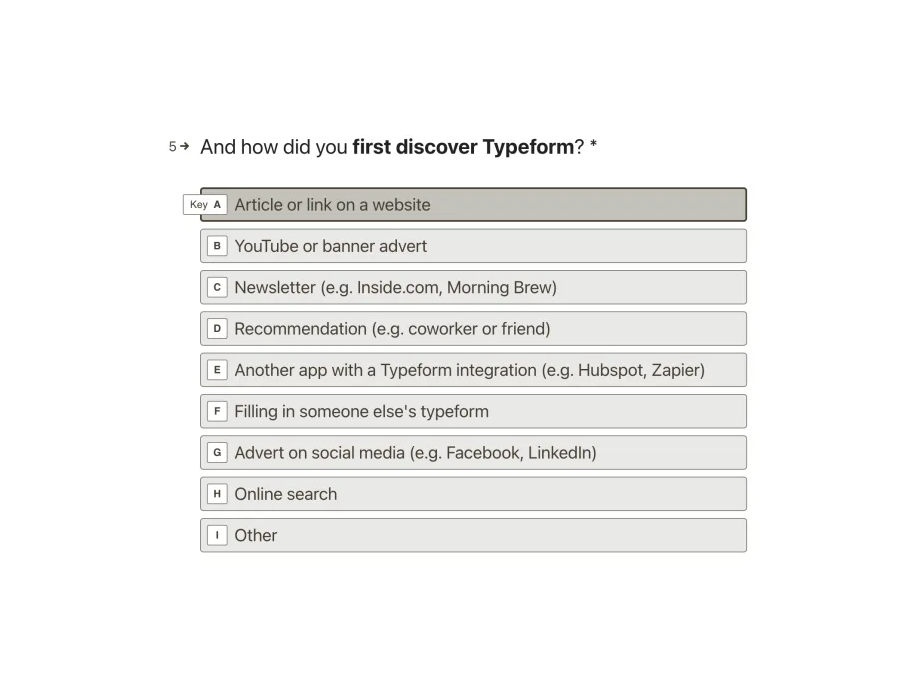
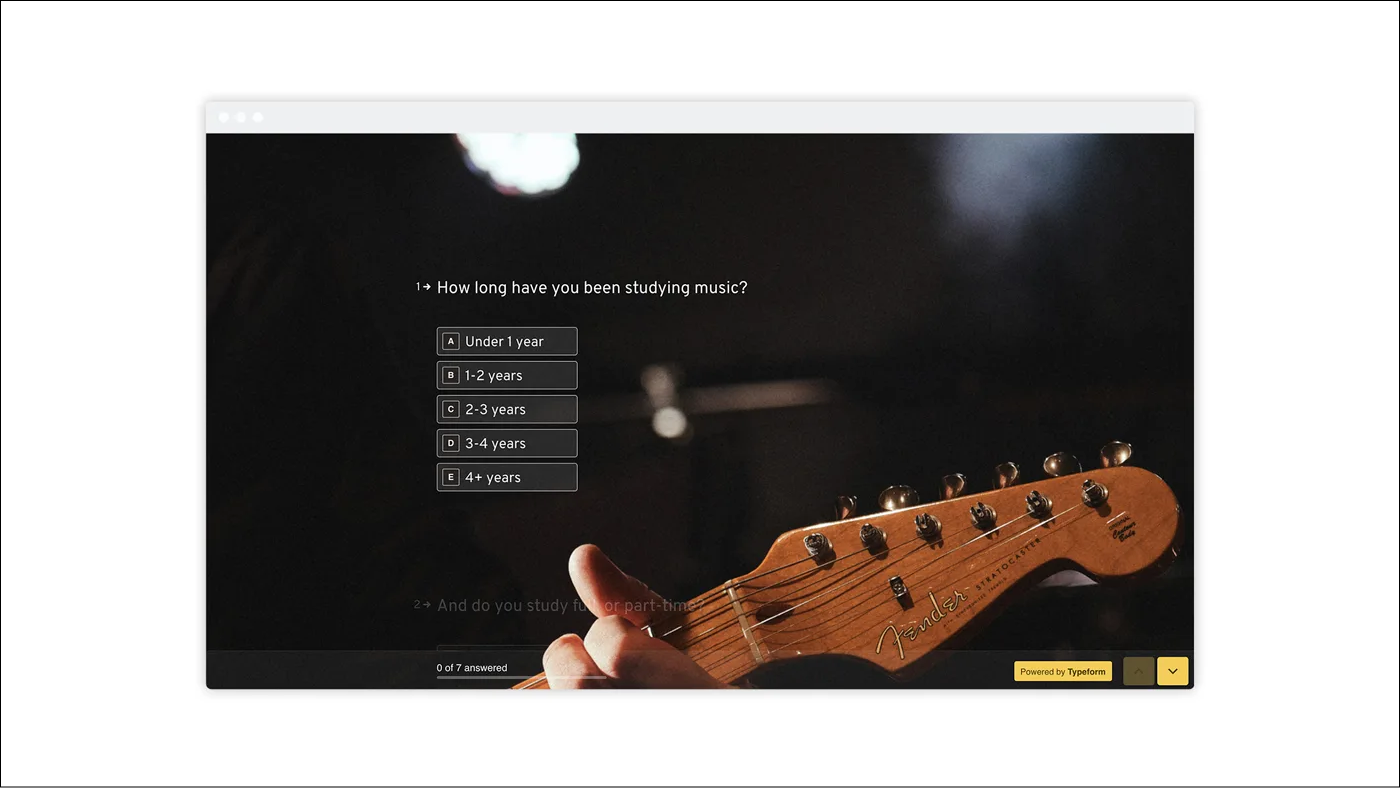
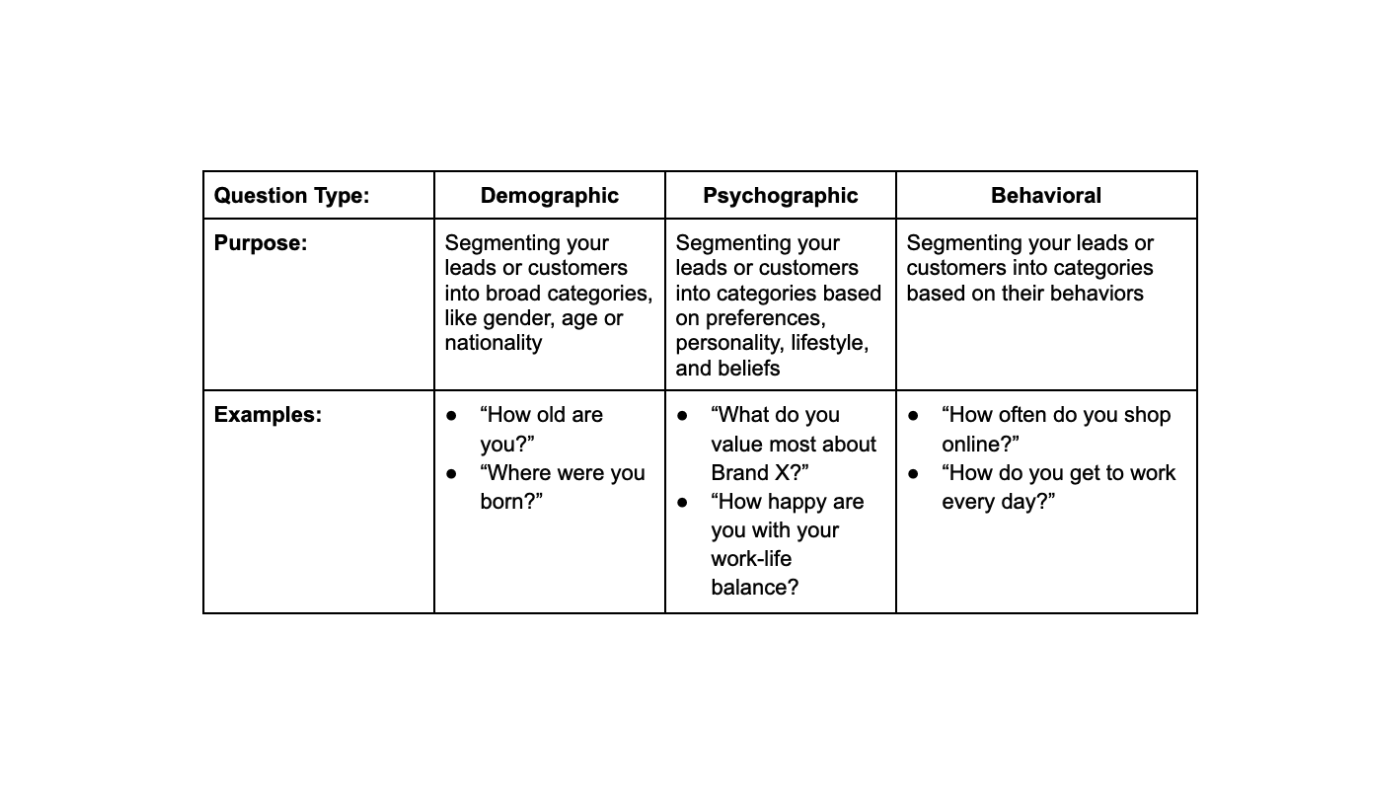
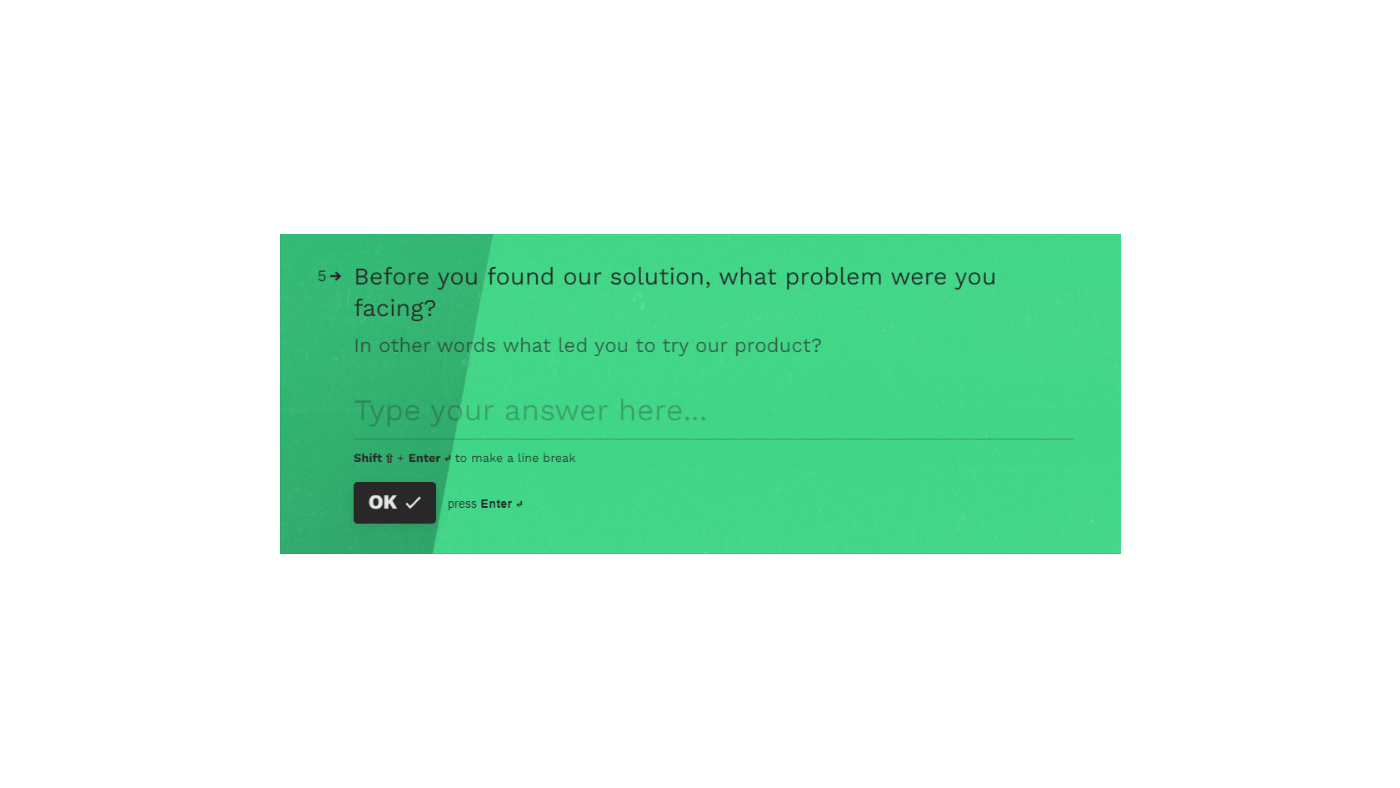
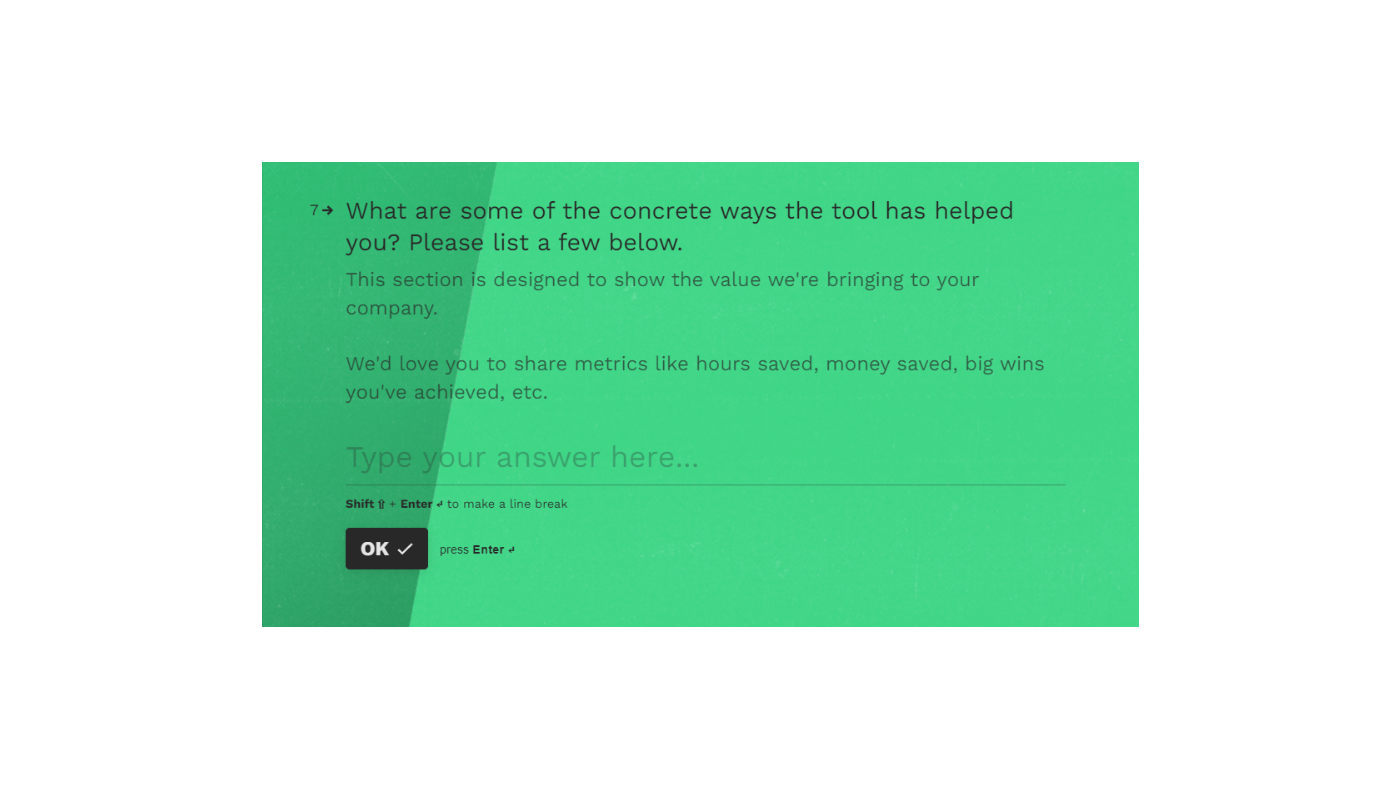
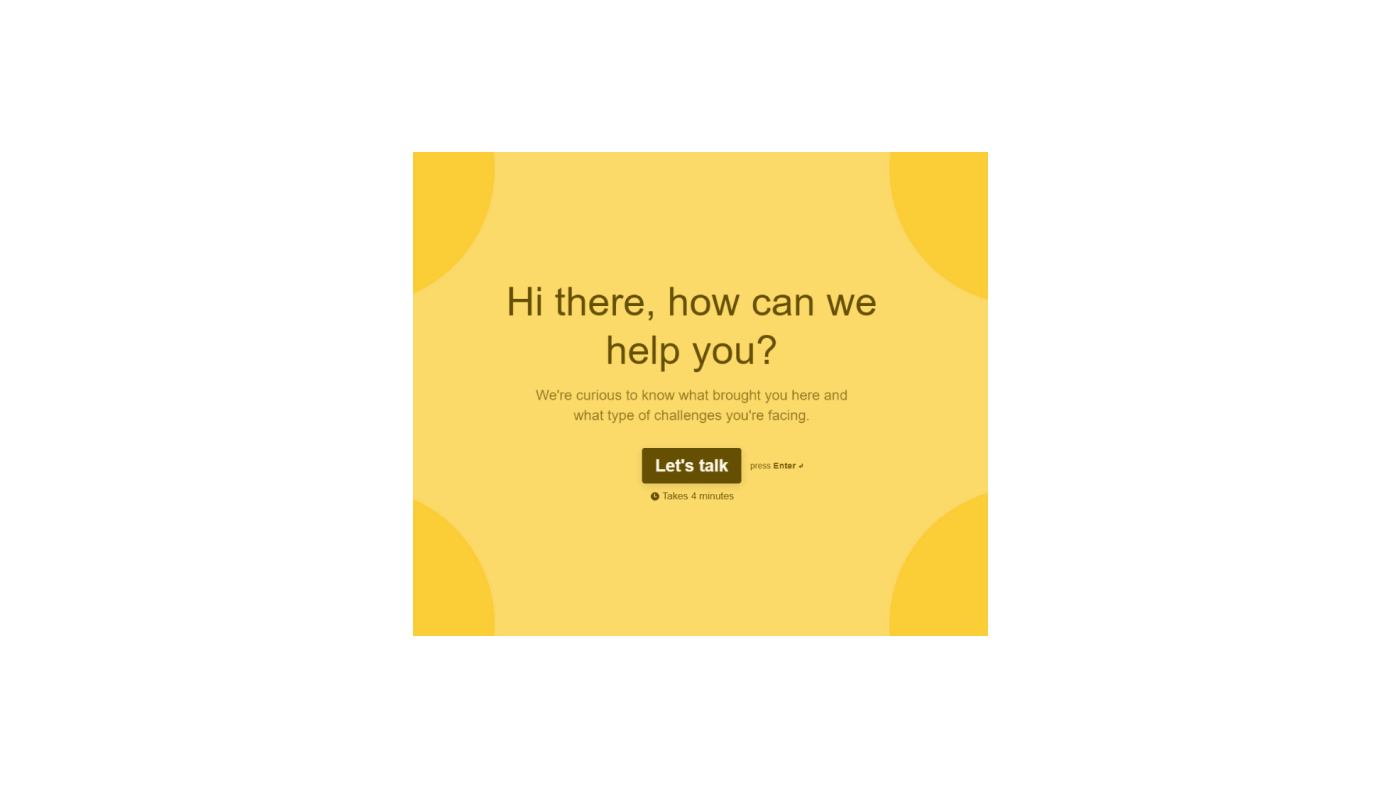

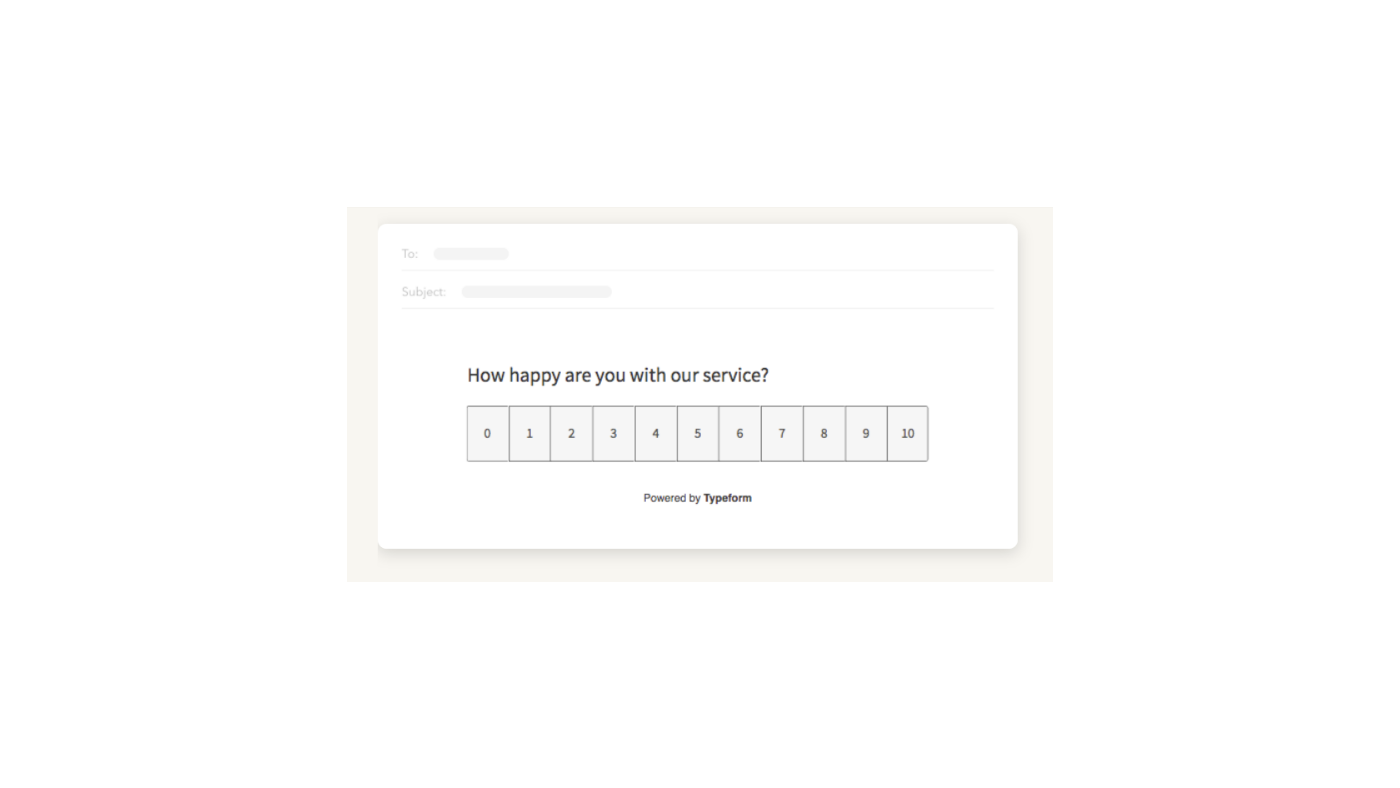
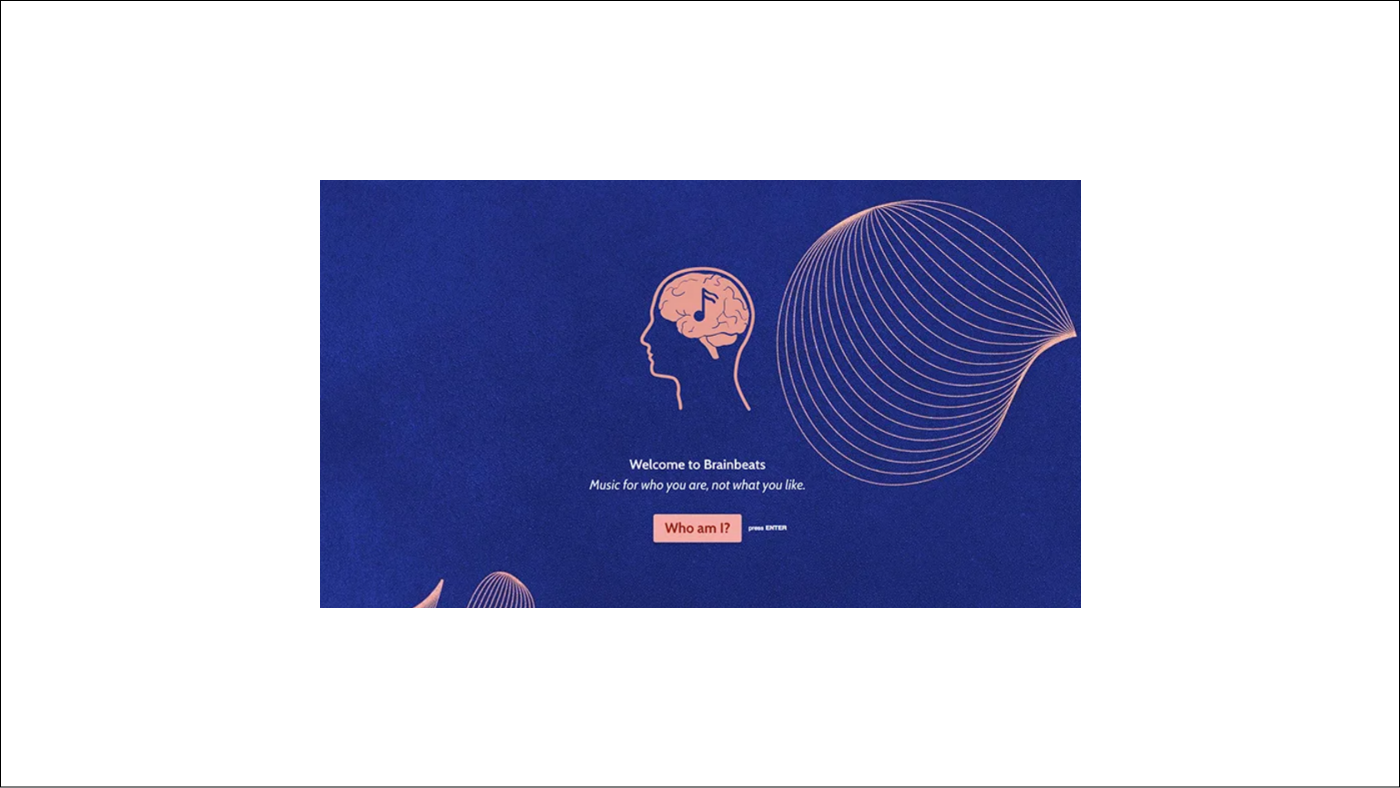


.png)

